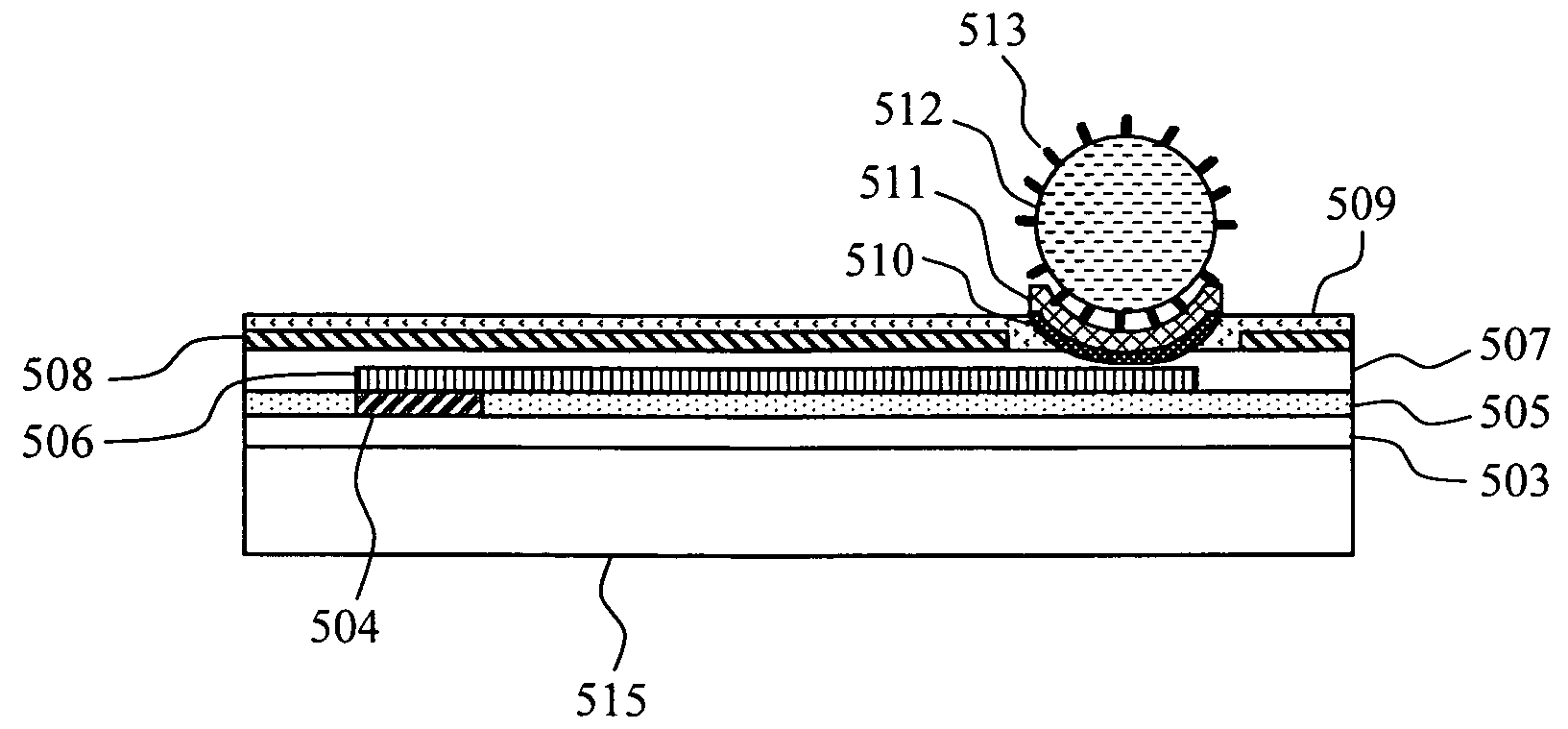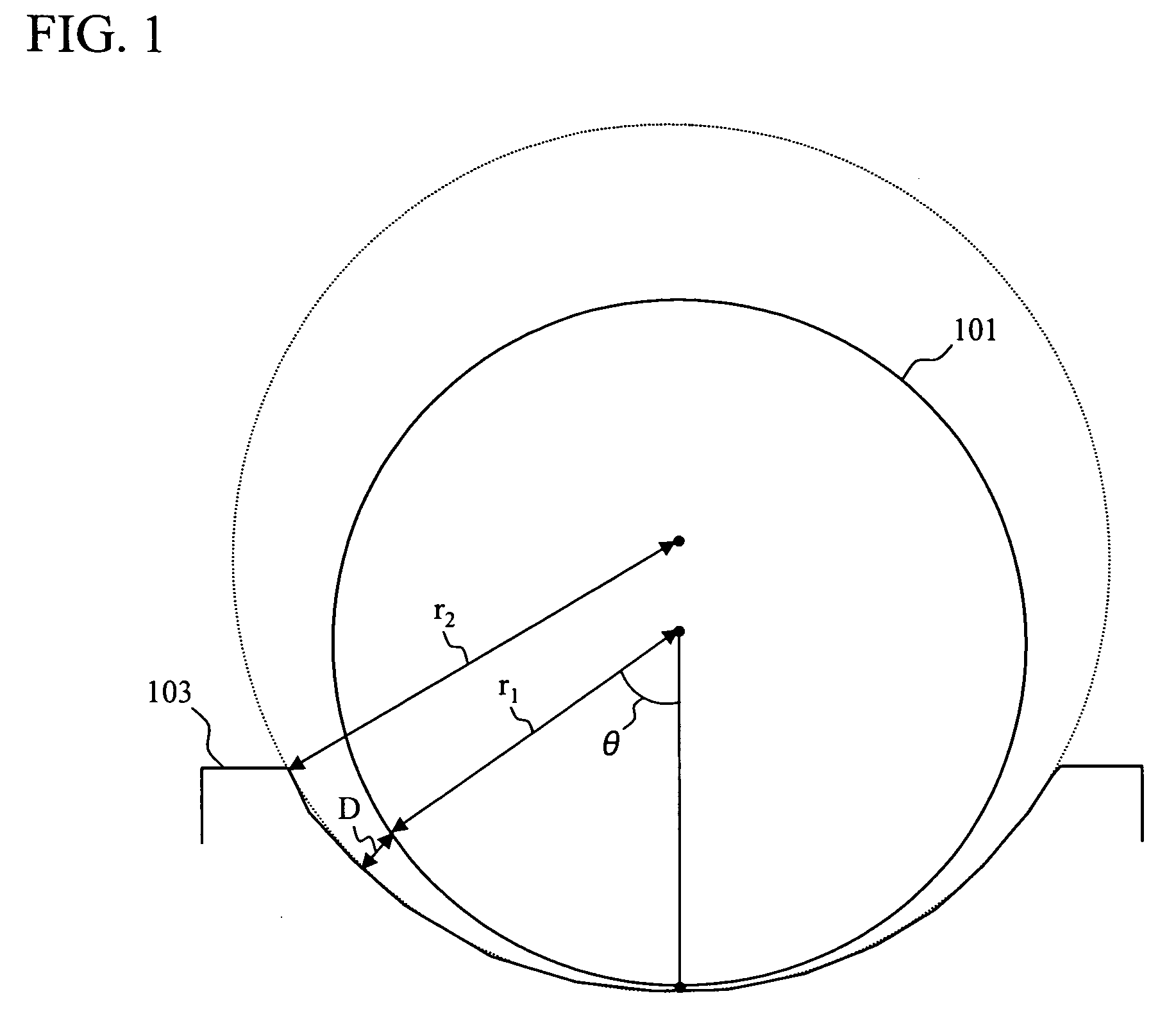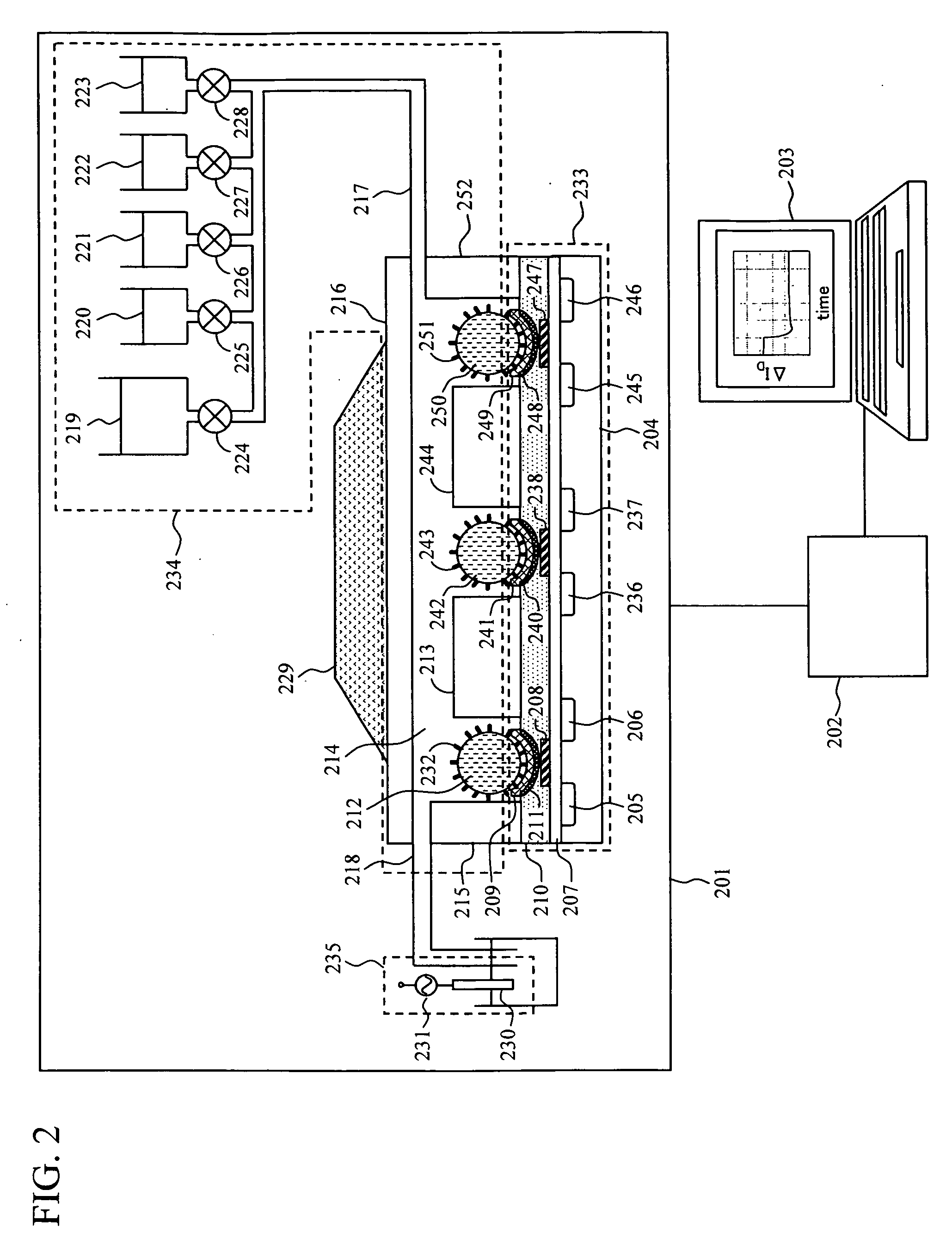DNA measuring system and method
a technology of dna and measuring system, applied in the field of dna measuring system and method, can solve the problems of small change in interfacial potential per extension reaction of base, difficult detection of extension reaction, and difficulty in reuse of fet sensor, so as to suppress the deterioration in the reproducibility of measurement, high accuracy detection, and the effect of suppressing the deterioration of measurement reproducibility
- Summary
- Abstract
- Description
- Claims
- Application Information
AI Technical Summary
Benefits of technology
Problems solved by technology
Method used
Image
Examples
first embodiment
[0026]FIG. 2 shows an example of a system configuration of a FET-based DNA sequencer according to the present invention. The system is configured of a measuring unit 201, a signal processing circuit 202, and a data processing device 203. Further, the measuring unit 201 has four structural components including: a FET sensor unit 233, a chamber unit 234, a fine particle control unit 229, and a reference electrode unit 235. Details of these components will be described below.
[0027]The FET sensor unit 233 has multiple FETs formed on a silicon substrate 204, includes multiple combinations of: a source 205; a drain 206; a metal electrode 209 formed on an adhesive layer 211 connected to a gate insulating film 207 through a conductive wiring 208; a source 236; a drain 237; a metal electrode 241 formed on an adhesive layer 240 connected to the gate insulating film 207 through a conductive wiring 238; a source 245; a drain 246; and a metal electrode 249 formed on an adhesive layer 248 connect...
second embodiment
[0048]In the second embodiment, a magnetic field generator was used as a means for controlling the position of the fine particle. The general configuration of the system is equivalent to that shown in FIG. 2. In the second embodiment, a strong magnet was used as the magnetic field generator for the fine particle control unit 229, and magnetic beads of 200 μm in diameter were used for the fine particles 212, 242 and 250. A preparation method for the fine particles 212, 242 and 250 having the DNA molecules 232, 243 and 251 immobilized thereon, a method for settlement of the fine particles 212, 242 and 250 in the wells, and an extension reaction method are equivalent to those of the first embodiment. Description will be given below with regard to a solution change and a interfacial potential detection method, which are different from the first embodiment.
[0049]At the time of the solution change using the solution injection port 217 and the solution ejection port 218, for purposes of mo...
third embodiment
[0051]Description will be given with reference to FIG. 2, as in the case of the first and second embodiments. In the third embodiment, temperature control is used to control the position of the fine particle for nucleotide sequence determination. To this end, a Peltier element for the temperature control is disposed in the fine particle control unit 229. Other structural components are equivalent to those of the first embodiment. Incidentally, in the third embodiment, the Peltier element is used; however, anything other than the Peltier element may also be used, as long as it is a system for temperature control. Also, a specific sequence determination method is equivalent to the first embodiment, except for a fine particle manipulation method for the interfacial potential detection method.
[0052]For the interfacial potential detection, the Peltier element of the fine particle control unit 229 was used to set the temperature in the solution tank 214 at 5 degrees. This suppresses the B...
PUM
| Property | Measurement | Unit |
|---|---|---|
| diameter | aaaaa | aaaaa |
| diameter | aaaaa | aaaaa |
| wavelengths | aaaaa | aaaaa |
Abstract
Description
Claims
Application Information
 Login to View More
Login to View More - R&D
- Intellectual Property
- Life Sciences
- Materials
- Tech Scout
- Unparalleled Data Quality
- Higher Quality Content
- 60% Fewer Hallucinations
Browse by: Latest US Patents, China's latest patents, Technical Efficacy Thesaurus, Application Domain, Technology Topic, Popular Technical Reports.
© 2025 PatSnap. All rights reserved.Legal|Privacy policy|Modern Slavery Act Transparency Statement|Sitemap|About US| Contact US: help@patsnap.com



